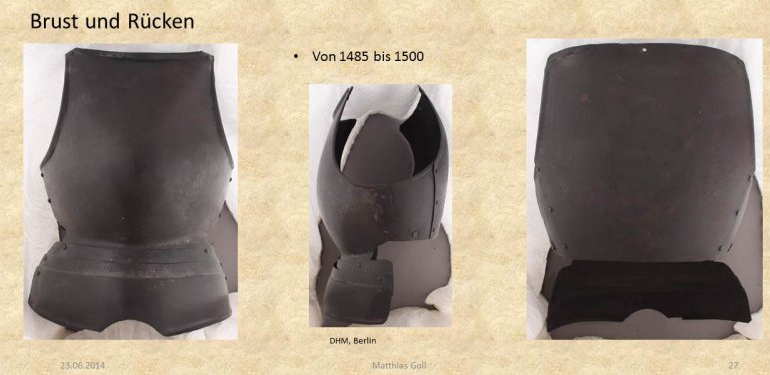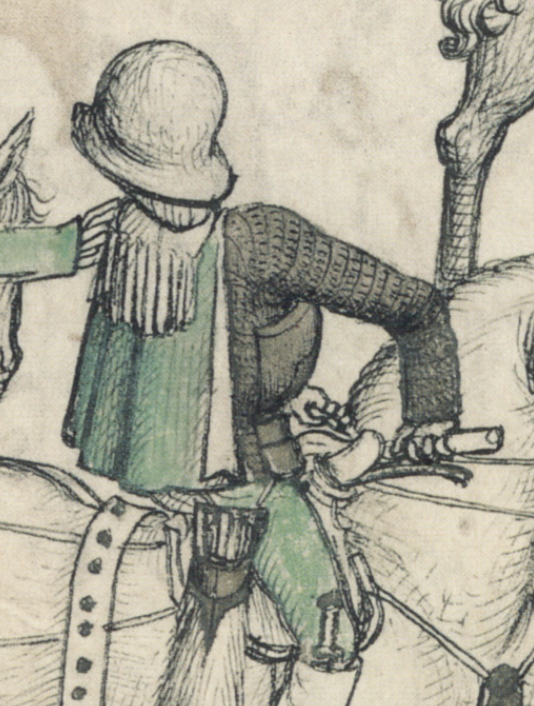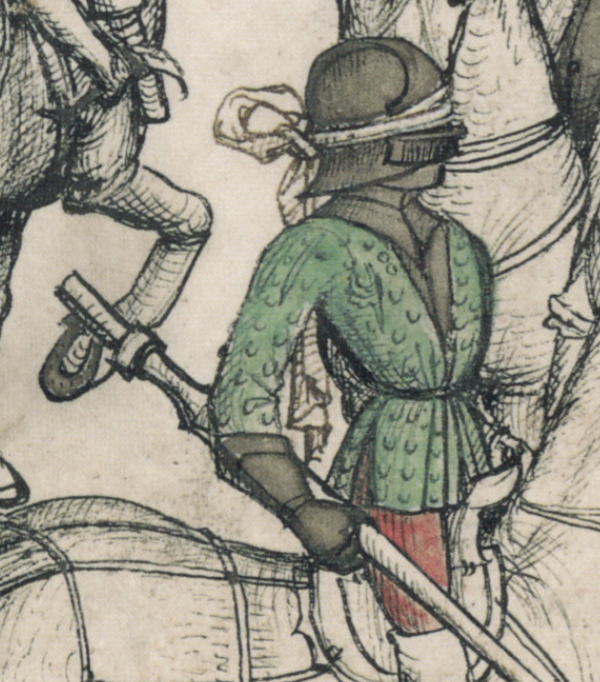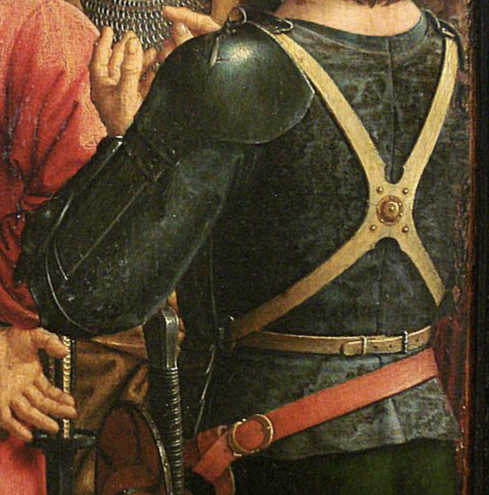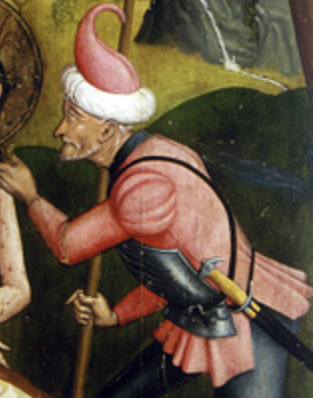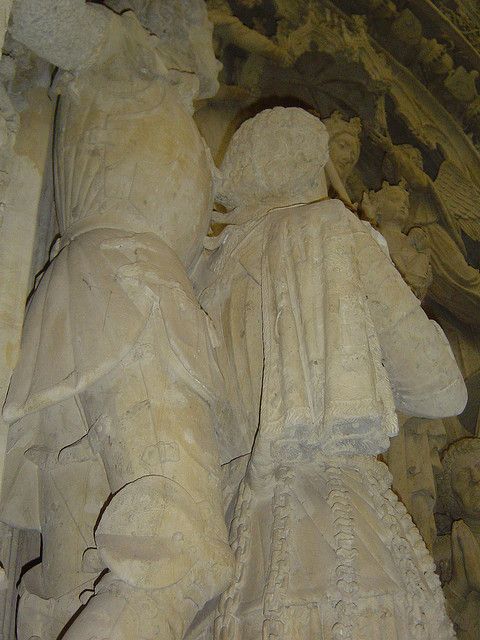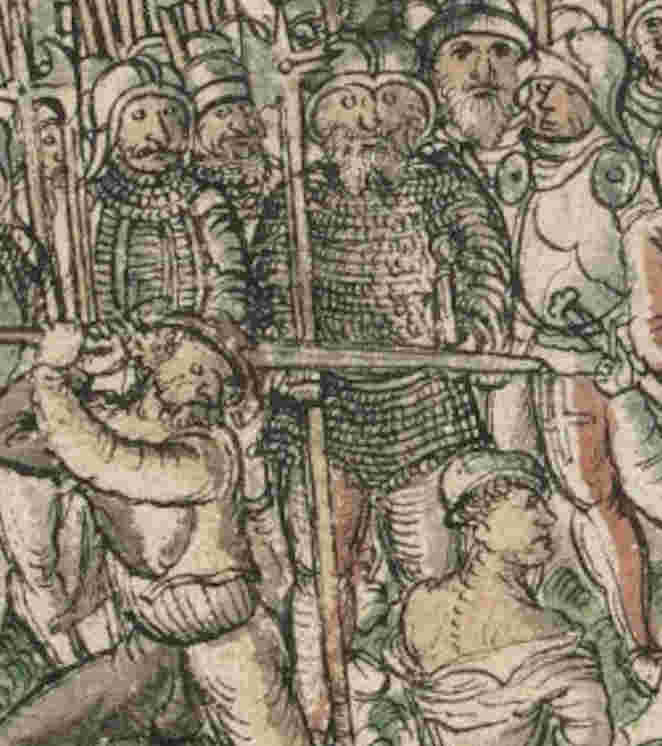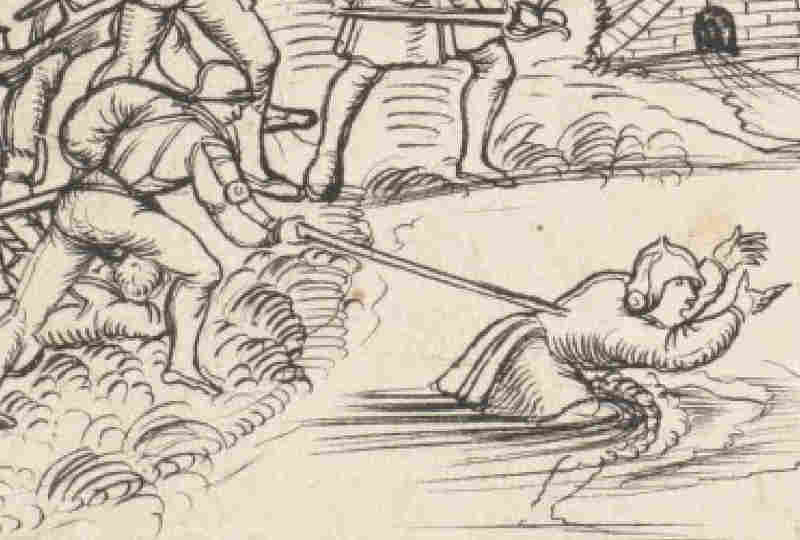Posts: 453 Location: Sioux City, IA
Sun 19 May, 2019 8:08 am
Re: Breastplates without back plates
I've seen in art, depictions of what appear to be levies and city militias wearing little more than a breastplate (no backplate) sometimes with a helmet and occasionally gauntlets. It also seems that light cavalry Frei-Lanzer/demi-lance/coustiller armor ranged from gauntlets, a mail shirt worn under a breastplate (no backplate) a sallet and occasionally a bevor to the same outfit with light arm harnesses and knee-length leg harnesses added. The lower legs being protected only by boots. By the 16th century, you sometimes see Landsknechts wearing a breastplate and backplate and a helmet of some kind and Frei-Lanzers/demi-lances/coustillers wearing a breastplate with backplate and articulated assets, mail shirt underneath (or just sleeves), gauntlets and an armet.[/quote]
I ought not to be a specialist in the given subject, but I would say there isn't a proper answer for you since we lack quantitative information on that. However, there is plenty of evidence of how these pieces would appear depending on what army or social condition we are talking about:
The first image shows a mounted crossbowman, which is bellow the rank of men-at-arms and of which couldn't afford full armor (for example, the book
Lisboa e a Guerra had a royal decree stating that people with enough income to afford the weapons and full armor had be promoted from the crossbowmen class to the MAA class)
The second isn't a frontal cuirass, the whole piece is actually underneath the clothes, sometimes these hide fully or partially the cuirass (arm harness, however, is normally worn OVER the clothes). The soldier in the picture is a light cavalrymen. Both mounted crossbowmen and light cavalrymen came from somewhat mid-class citizens who couldn't afford the cost of being a propper men-at-arms. I highly recommend you read Daniel's article on German light cavalry:
http://kriegsbuch.blogspot.com/2016/01/the-ap...n.html?m=1
To short the question, by 15th c. there was a trend in continental Europe of providing support cavalry to the traditional role of the MAA; this might have happened also because of the income growth of the
gens de commune, who would have increased the amount of equipment but not enough to become a man-at-arms. In France, the supportive role came in the military class of the mounted coustillier, latter even the mounted archers also acquired shock cavalry roles. In Spain the traditional
ginete light cavalry embraced a more shock cavalry role, then dropped its javelins, light lances and basically became indistinguished from the rest of Europe. See:
http://ejercitodeflandes.blogspot.com/2013/10/jinete-ginete.html
The last two images are representing infantrymen. Veteran and more wealthy infantrymen would manage to get more pieces of armor to be more well-clad; since they couldn't afford the whole suit, they would buy or use the most important pieces for them; that's why, for example, the Jack Chains, or
cadenas in Castillian, emerged. Frontline pikemen and billmen, light cavalrymen, veteran and richer archers and crossbowmen often have these partially armored fitting.
It's important to notice that the priority of pieces isn't the same in all places and in all times: who can see a preference for leg armor in 14th and 15th centuries while these basically disappeared from the military by 1500's.
In any case, I would recommend that in every case analyzed you look after if there was an expected amount of armour since this could vary a lot: apparently there wasn't a expectation for armor from the Landsknecht pikemen, though frontline pikemen and doppelsoldner necessarily HAD to be armored. I don't have the picture know, but I remember seeing an early 16th. century colored picture of a Landsknecht formation of which the rearguard was entirely composed of Zweihander-armed Doppelsoldner, all of them using cuirasses with frontal and back plates. This, I presume, was the minimum amount of armor for Doppelsoldner by this time. Have a look at the piece in my files, from another topic of this forum, it's said it was mass produced in the time of emperor Maximilian for the Landsknecht troops
Last commentaries: mail stopped being common by 1500, so except in more specific places (Hungary, Portugal etc), people would either have anything to wear or depend in the cuirasses, whether the full or the frontal ones (the latter being cheaper). Have this in mind before analyzing those periods.
1500's Dolstein description of the swedish army and german Landsknecht soldiers show that frontline pikemen wore full cuirasses, tasset, and arm harness; while both the normal pikemen and the doppelsoldner (by this time only the halberdiers, the two handers not being introduced yet) had at least the frontal cuirass.
Halberdier and dismounted Swedish MAA:
https://www.pinterest.ru/pin/408279522442807645/
Pikemen exercise:
https://www.pinterest.ru/pin/342203271660547734/
https://www.pinterest.ru/pin/342203271660547732/
Frontline pikemen at battle:
https://www.pinterest.ru/pin/342203271660547731/
Extra: "knecht" in german doesn't mean "knight" (that would be ritter; which is different from reiter, this meaning just "cavalry").
 Attachment: 316.36 KB
Attachment: 316.36 KB
